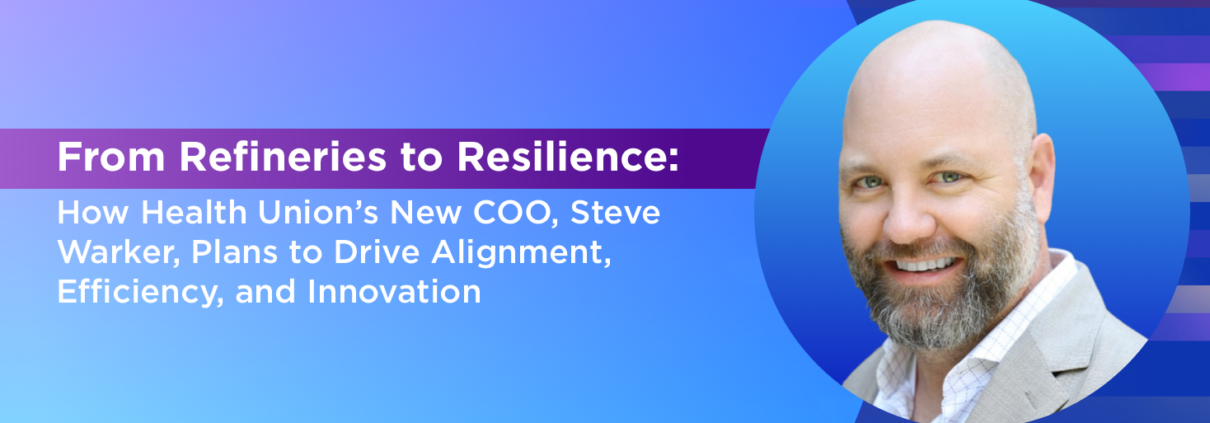Healthcare Industry Adapts to the Baby Boom Generation’s Needs
As the baby boomer generation ages, the healthcare industry adapts and innovates to provide quality, accessible, and cost-effective care. Born between 1946 and 1964, the baby boomers constitute a substantial portion of the population. In 2000, the Medicare-eligible population (65 years or older) in the United States numbered 35.1 million. By 2030, this number is expected to increase to 69.7 million.[6]
This demographic shift drives increased demand for a wide range of healthcare services, from primary care and chronic disease management to long-term care and specialized geriatric services. Healthcare providers are adapting to accommodate the unique needs of this aging population, emphasizing preventative care and strategies to promote healthy aging. The healthcare industry is responding with innovative technologies and pharmaceuticals targeted at age-related conditions and diseases.
Patients Are Expecting More from HCPs
Patient needs in healthcare are evolving as individuals become more knowledgeable and proactive about their health. Advances in medical science and technology have expanded diagnostic and treatment options, raising patient expectations for the latest and most effective care. Additionally, the globalization of healthcare and the widespread availability of medical information online have empowered patients to make informed decisions and advocate for personalized, patient-centric care. Today’s patients increasingly expect digitized healthcare solutions, individualized treatment plans, and faster access to cutting-edge therapies.
As a result, healthcare providers are placing greater emphasis on personalized medicine, which tailors treatments to an individual’s genetic, environmental, and lifestyle factors. By leveraging these insights, medical professionals aim to enhance treatment efficacy, minimize adverse effects, and deliver more precise and effective care. This shift represents a broader trend toward proactive, data-driven healthcare, ensuring that treatments are not only innovative but also aligned with each patient’s unique needs.[7]
HCPs are Focusing on Patient-Centered Care
HCPs increasingly prioritize patient-centered care due to its profound impact on healthcare outcomes and patient satisfaction. Patient care makes up 64% of the total revenue in healthcare, and one in eight US citizens work within the healthcare industry.[8]
Patient-centered care recognizes the importance of tailoring medical treatment to individual patient needs, preferences, and values. By actively involving patients in their healthcare decisions, this approach enhances adherence to treatment plans, reduces the risk of medical errors, and ultimately leads to better health outcomes. Patients who feel heard and valued in their healthcare experiences tend to be more satisfied with their care, fostering trust and a positive doctor-patient relationship.
The healthcare industry’s growing recognition of the importance of patient-centered care encourages HCPs to adopt this approach, ensuring better patient outcomes and more effective healthcare delivery. As HCPs focus on providing more individualized therapies, they have become increasingly specialized. Healthcare marketers need highly targeted and personalized content that resonates with these HCP audience segments to engage them.
Healthcare Industry Responds to Market Trends
As the healthcare industry tries to keep up with the rising market demands, we are seeing a return to normalcy in FDA approvals, an increased focus on geriatric and rare disease medications, and significant advances in medical technology.
FDA Drug Approvals Continue to Stabilize Amid Evolving Regulatory Landscape
The year 2025 marks a continued return to regulatory normalcy for the medical community and the U.S. Food and Drug Administration (FDA). After years of prioritizing infectious diseases and emergency authorizations, the agency has rebalanced its focus across a broad spectrum of therapeutic areas.
In 2020, the FDA’s Center for Drug Evaluation and Research (CDER) approved 53 novel drugs, including new molecular entities (NMEs) and biologics license applications (BLAs).[⁹] By 2024, approval trends had largely stabilized, with the agency continuing to greenlight a diverse range of therapies. Recent years have been characterized by a steady flow of novel drug approvals, including landmark decisions for previously untreatable conditions and advances in precision medicine.[¹⁰] As 2025 progresses, the FDA’s focus remains on innovation, safety, and expanding treatment options across multiple disease areas.
Drugs Released For Aging Population
The FDA’s release of more drugs for an aging population shows a response to the rising health needs of older adults who face age-related conditions. Longer life expectancy and the desire for a high quality of life in later years have increased the demand for pharmaceutical innovations that improve health outcomes and the well-being of older adults. Here are three notable releases of new drugs in 2024:
Resmetirom (Rezdiffra)
- Indication: Non-alcoholic steatohepatitis (NASH).
- Significance: Approved in 2024, Resmetirom is the first FDA-approved drug for NASH, a liver condition that disproportionately affects older adults. By reducing liver fat and inflammation, it addresses a significant unmet need in geriatric care, as NASH is a leading cause of liver-related complications in aging populations.(11)
Leqembi (Lecanemab)
- Indication: Alzheimer’s disease.
- Significance: Approved in 2023, Leqembi is a monoclonal antibody designed to slow cognitive decline in early-stage Alzheimer’s patients by targeting amyloid-beta plaques. This approval marks a breakthrough in neurodegenerative disease treatment, offering new hope for a condition that primarily affects older adults.(12)
Sotatercept (Winrevair)
- Indication: Pulmonary arterial hypertension (PAH).
- Significance: Released in 2024, Sotatercept provides a novel treatment approach for PAH, a condition increasingly prevalent in older populations. By targeting vascular remodeling and dysregulated TGF-beta signaling, it improves patient outcomes and enhances quality of life for those managing this progressive disease.(11)
Drugs Released For Rare Diseases
In 2024, the U.S. Food and Drug Administration (FDA) approved 26 new drugs specifically for rare diseases, representing 52% of the 50 novel drug approvals that year.¹³ These therapies were developed to treat conditions affecting fewer than 200,000 people in the U.S., many of which previously had no approved treatment options.
The increasing focus on rare disease treatments is driven by advancements in biomedical research, which have deepened the understanding of the genetic and molecular mechanisms underlying these conditions. This progress has enabled the development of targeted therapies that address the root causes of rare diseases. Additionally, FDA incentive programs—such as orphan drug designation—have encouraged pharmaceutical investment in rare disease research by offering market exclusivity and tax credits. Patient advocacy groups have also played a pivotal role in raising awareness, driving funding, and supporting drug development efforts.[¹³]
To expedite treatments for urgent medical needs, the FDA utilized fast track and breakthrough therapy designations for 66% of these rare disease drugs.¹³ Many of these therapies were first-in-class treatments or provided new options for conditions that previously lacked FDA-approved therapies, such as Niemann-Pick disease type C and WHIM syndrome.[¹³]
Additionally, advances in gene and cell therapies have played a significant role in developing innovative treatments for rare diseases, further expanding therapeutic options for patients.[¹⁴] These approvals underscore the FDA’s commitment to accelerating life-changing therapies and addressing unmet medical needs for underserved patient populations.
Advances in Medical Technology
The medical device industry is also pushing to meet the current population’s rising demands, including those with the aging population who seek minimally invasive procedures. One notable trend is the increasing use of robotic surgeries for minimally invasive surgeries, with the global surgical robots market expected to reach $18.4 billion by 2027.[15]
Leading-edge advancements, such as telemedicine, wearable health devices, and AI-powered diagnostics, are becoming progressively integral in enhancing patient care. The market for remote patient monitoring devices is set for substantial growth, with an estimated value of $8.1 billion by 2030, particularly in managing chronic conditions and expanding telehealth services.[14] Currently, 60% of healthcare organizations have embraced IoT within their facilities, and more organizations continue to utilize this technology. Nearly half of companies (47%) are poised to expand their utilization of connected health devices.16
Additionally, the use of artificial intelligence and machine learning in medical devices is growing, with the global AI/ML medical device market projected to reach $35.5 billion by 2032, driven by increased demand and various therapeutic applications.[14] The 3D printing of medical devices is rapidly evolving, offering innovative solutions in areas such as surgical planning, training, and orthotics, with the market expected to reach $5.9 billion by 2030, supported by its extensive adoption within the medical industry.[15]
Competing in the Healthcare Industry Requires Targeted HCP and Patient Engagement
In the move towards digital healthcare, where telemedicine and remote patient monitoring are becoming mainstream, healthcare organizations, including pharmaceutical and medical device companies, must engage HCPs digitally. This engagement is essential for healthcare organizations to align with evolving market trends that require them to promote, educate, and collaborate with HCPS on adopting these drugs and technologies so they can effectively reach and serve patients while maintaining quality care standards.
The Healthcare Industry is Digital
The healthcare industry has continually transitioned toward digital platforms, engagement, and distribution. The extensive reach and precise targeting capabilities of digital media, the growing online presence of healthcare professionals and patients, and the rapid adoption of telehealth and digital healthcare services are driving this shift. Take this graph, for example. It illustrates the decline in consumer time spent on traditional media (print, broadcast television, radio, etc.) and the increase in time spent on digital media (online streaming services, social media) from 2011 to 2025 (projected).
Engage HCPs with Handcrafted Audiences
A strategic digital advertising approach is necessary to reach and influence the healthcare industry’s key decision-makers effectively. HCPs are responsible for patient care and treatment decisions, making their engagement pivotal in promoting healthcare products, services, and solutions. Providing educational content aids in building trust and positioning your brand as a valuable resource for HCPs striving to stay updated with the rapidly evolving healthcare landscape.
Healthcare organizations can elevate the effectiveness of their advertising by utilizing a segmented database capable of identifying HCPs based on license type, specialization, location, and other relevant factors. This customized approach can be strengthened with retargeting and behavioral strategies, ensuring your brand remains top-of-mind for HCPs.
Expanding Patient Engagement for Greater Impact
Beyond HCP engagement, patient-targeted strategies are now a critical component of effective healthcare marketing. As patients become more digitally engaged and proactive in their healthcare decisions, organizations must deliver personalized, relevant, and trustworthy content that empowers them to discuss treatments with their providers.
- Precision targeting allows marketers to reach patients based on demographics, health conditions, and behavioral data, ensuring messages resonate with the right audience.
- Educational content on disease awareness, treatment options, and emerging therapies helps patients make informed decisions and encourages discussions with HCPs.
- Omnichannel engagement, including programmatic advertising, social media, and patient support platforms, provides multiple touchpoints to inform, support, and guide patients through their healthcare journeys.
Winning in 2025: A Dual-Focus Strategy on HCPs and Patients
In 2025, healthcare marketing success requires a dual-focus strategy that seamlessly integrates HCP and patient engagement. Organizations that leverage data-driven targeting, tailored messaging, and digital-first strategies will be best positioned to drive adoption, improve patient outcomes, and stay ahead in the competitive healthcare landscape.
Learn more about Health Union’s vision to transform data-driven, healthcare marketing: The HUman Side of Data.
Sources
- Healthcare statistics for 2021: Policy advice. Healthcare statistics for 2021 | Policy Advice | Policy Advice. (n.d.). https://policyadvice.net/insurance/insights/healthcare-statistics/
- Market Data Forecast. (2024). Healthcare advertising market report 2024–2033. Retrieved from https://www.marketdataforecast.com/market-reports/healthcare-advertising-market.
- Mediaocean. (2024). The 2025 pharma & healthcare advertising outlook report. Retrieved from https://www.mediaocean.com/the-2025-pharma-healthcare-advertising-outlook-report.
- Dentsu. (2024). Global ad spend forecasts 2025. Retrieved from https://www.dentsu.com/news-releases/global-ad-spend-forecasts-2025.
- Market Data Forecast. (2024). Healthcare advertising market report 2024–2033. Retrieved from https://www.marketdataforecast.com/market-reports/healthcare-advertising-market.
- The Baby Boomer Effect and Controlling Healthcare Costs | USC Online. (2019, May 16). USC EMHA Online. https://healthadministrationdegree.usc.edu/blog/the-baby-boomer-effect-and-controlling-health-care-costs/#:~:text=In%202000%2C%20the%20Medicare%2Deligible
- Blue Whale Apps, Top Trends Shaping the Healthcare Industry, https://bluewhaleapps.com/blog/top-trends-shaping-the-healthcare-industry?utm_source=chatgpt.com.
- Stasha, S. (2020, July 29). The State of Health Care Industry (2020). PolicyAdvice. https://policyadvice.net/insurance/insights/healthcare-statistics/
- FDA Novel Drug Approvals (2024): https://www.fda.gov/drugs/development-approval-process-drugs/new-drugs-fda-cders-new-molecular-entities-and-new-therapeutic-biological-products
- Pharmaceutical Research and Manufacturers of America (PhRMA): Industry Trends & Drug Development (2024): https://www.phrma.org
- BioSpace, Geriatric Medicine Market Size to Reach USD 333.64 Billion by 2033, https://www.biospace.com/press-releases/geriatric-medicine-market-size-to-reach-usd-333-64-billion-by-2033.
- ² The Business Research Company, Anti-Aging Drugs Global Market Report, https://www.thebusinessresearchcompany.com/report/anti-aging-drugs-global-market-report.
- U.S. Food and Drug Administration, CDER Brings Many Safe and Effective Therapies to Patients and Consumers in 2024, https://www.fda.gov/news-events/fda-voices/cder-brings-many-safe-and-effective-therapies-patients-and-consumers-2024.
- U.S. Food and Drug Administration, CBER 2024 Orphan Approvals – New BLAs, https://www.fda.gov/vaccines-blood-biologics/cber-2024-orphan-approvals-new-blas.
- Roundtable: Medical Device Industry Trends 2022. (2022). Plexus.com. https://www.plexus.com/en-us/current/articles/medical-device-industry-trends
- Research, C. for D. E. and. (2023). New Drug Therapy Approvals 2022. FDA. https://www.fda.gov/drugs/new-drugs-fda-cders-new-molecular-entities-and-new-therapeutic-biological-products/new-drug-therapy-approvals-2022




